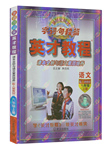题目内容
I hate ______ when the weather becomes freezing cold because there is no heater inside.
A. this B. that C. it D. so
练习册系列答案
 字词句段篇系列答案
字词句段篇系列答案
相关题目
题目内容
I hate ______ when the weather becomes freezing cold because there is no heater inside.
A. this B. that C. it D. so
 字词句段篇系列答案
字词句段篇系列答案